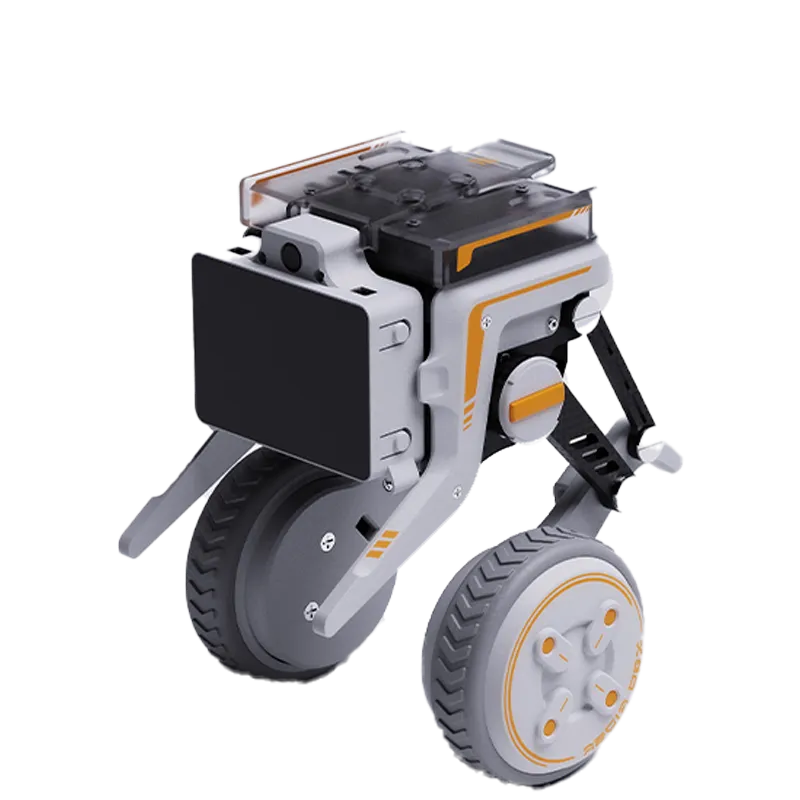Intro
XGO-Rider stands as a slim, compact bipedal robot approximately 135 mm long, 118 mm wide, and 116–158 mm tall, weighing about 600 grams, constructed from aluminum alloy, PC, and carbon fiber materials for stiffness and lightness. It combines two high-lifespan FOC brushless wheel motors and metal shell steel gear serial bus servos with 360° magnetic encoders to precisely control posture and locomotion. The embedded inertial measurement unit (IMU) continuously feeds real-time attitude data to the control loop, enabling smooth, stable, and omnidirectional movement modes such as turning, balancing, and stepping within its compact workspace. The robot supports both micro:bit V2 and Raspberry Pi CM4 host controllers, featuring integrated peripherals including a 5MP camera sensor, microphones, speaker, and a 2-inch TFT color screen (on CM4 variant) to facilitate AI capabilities and user interaction. USB-C charging and wireless connectivity complete the polished platform designed for ease of programming and experimentation.




